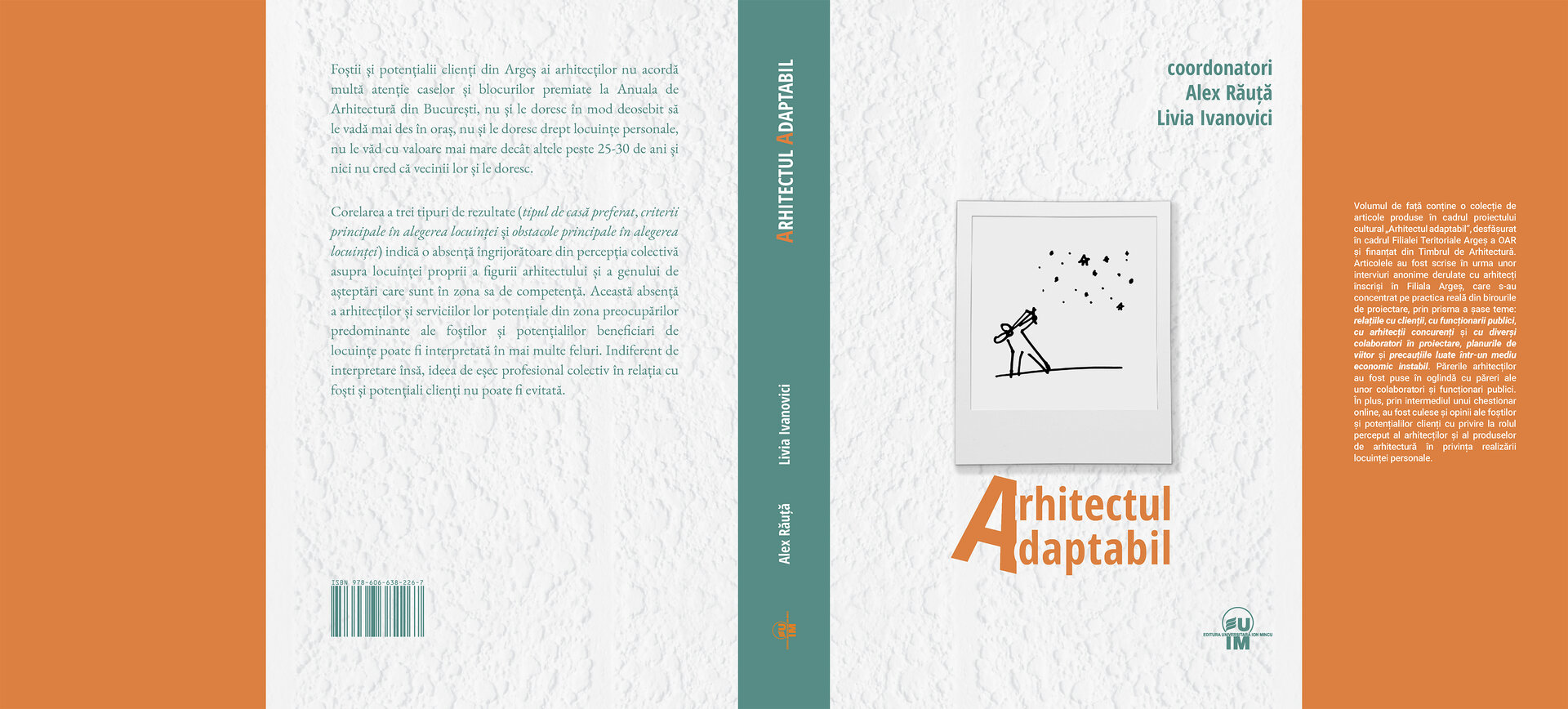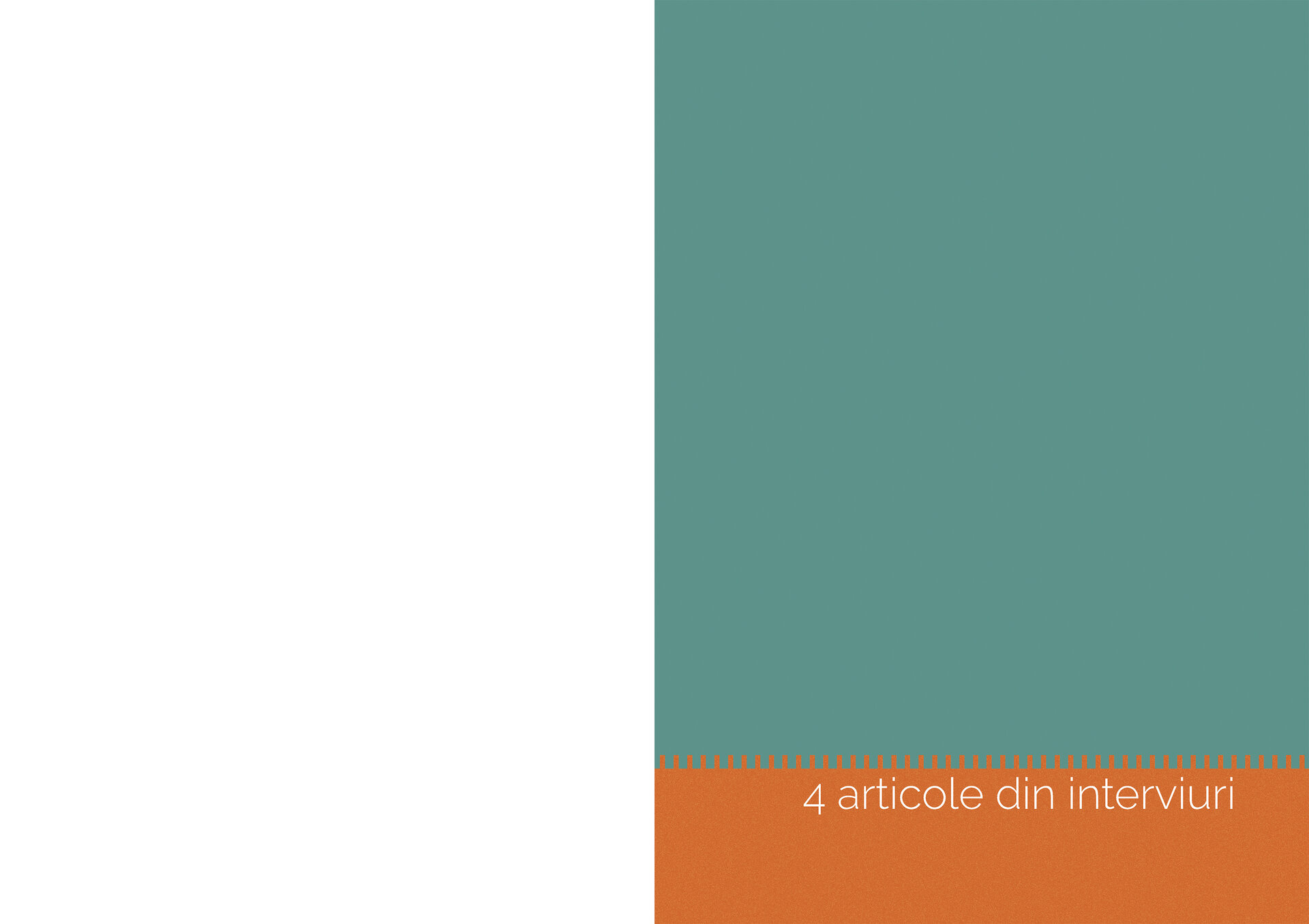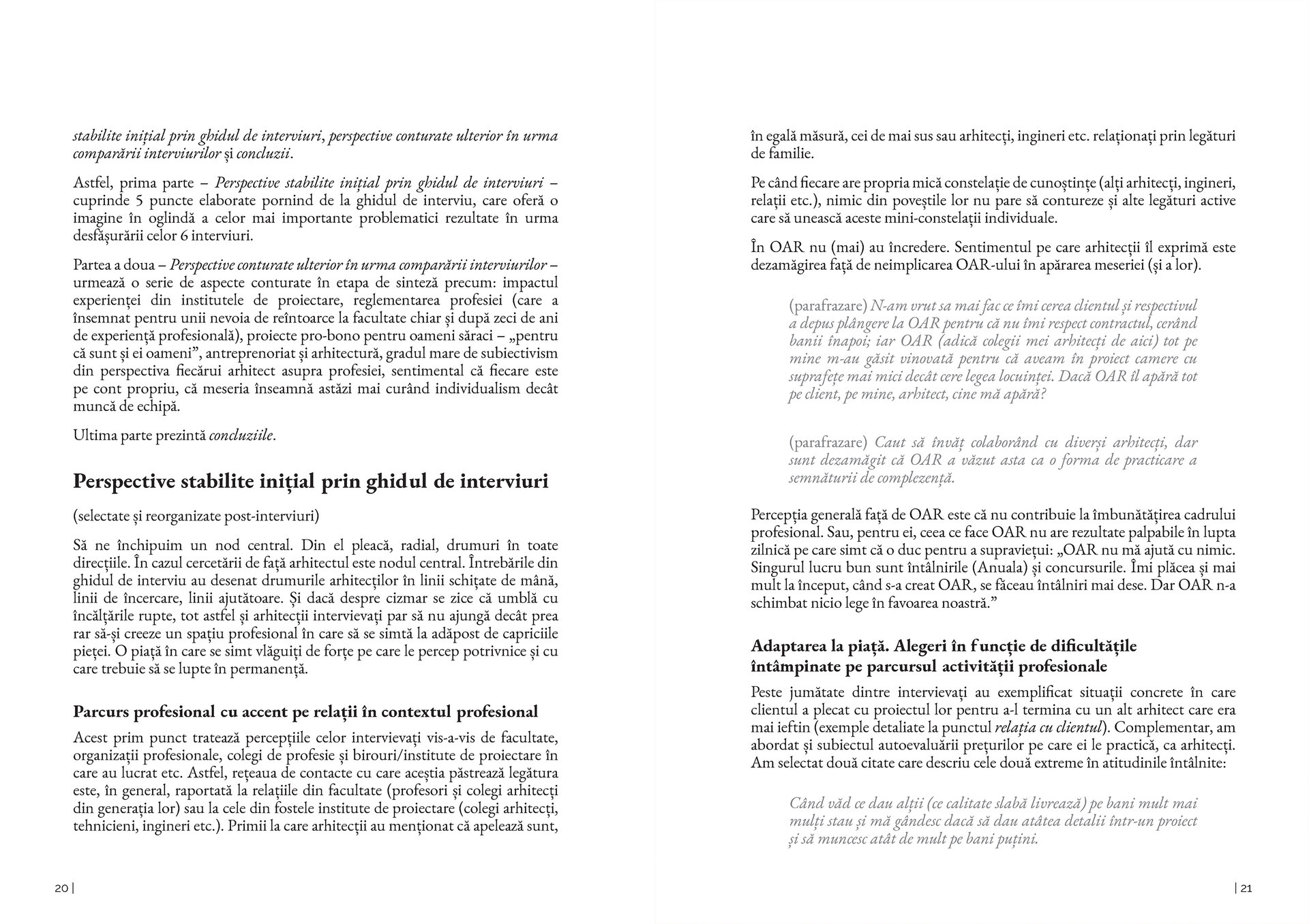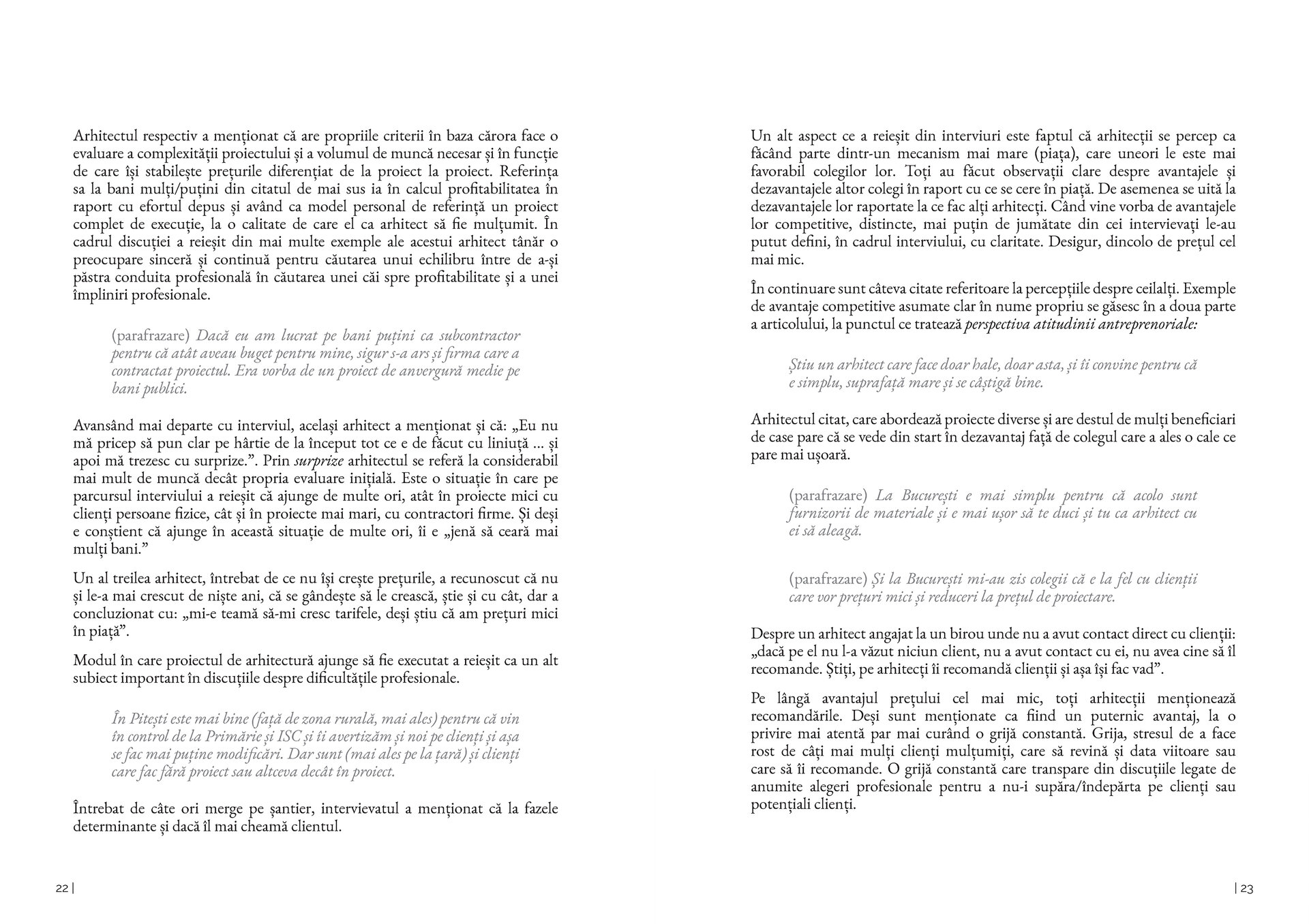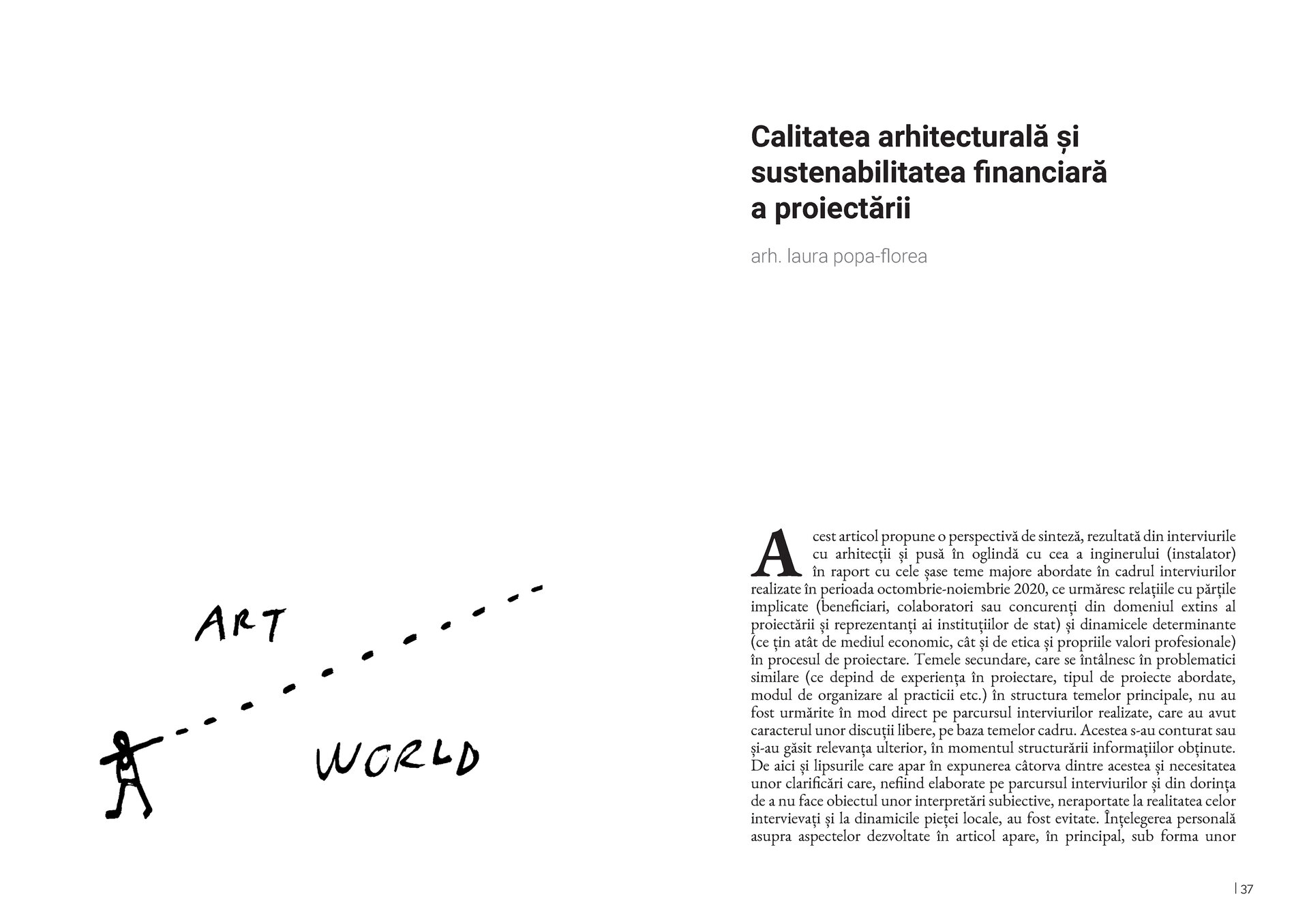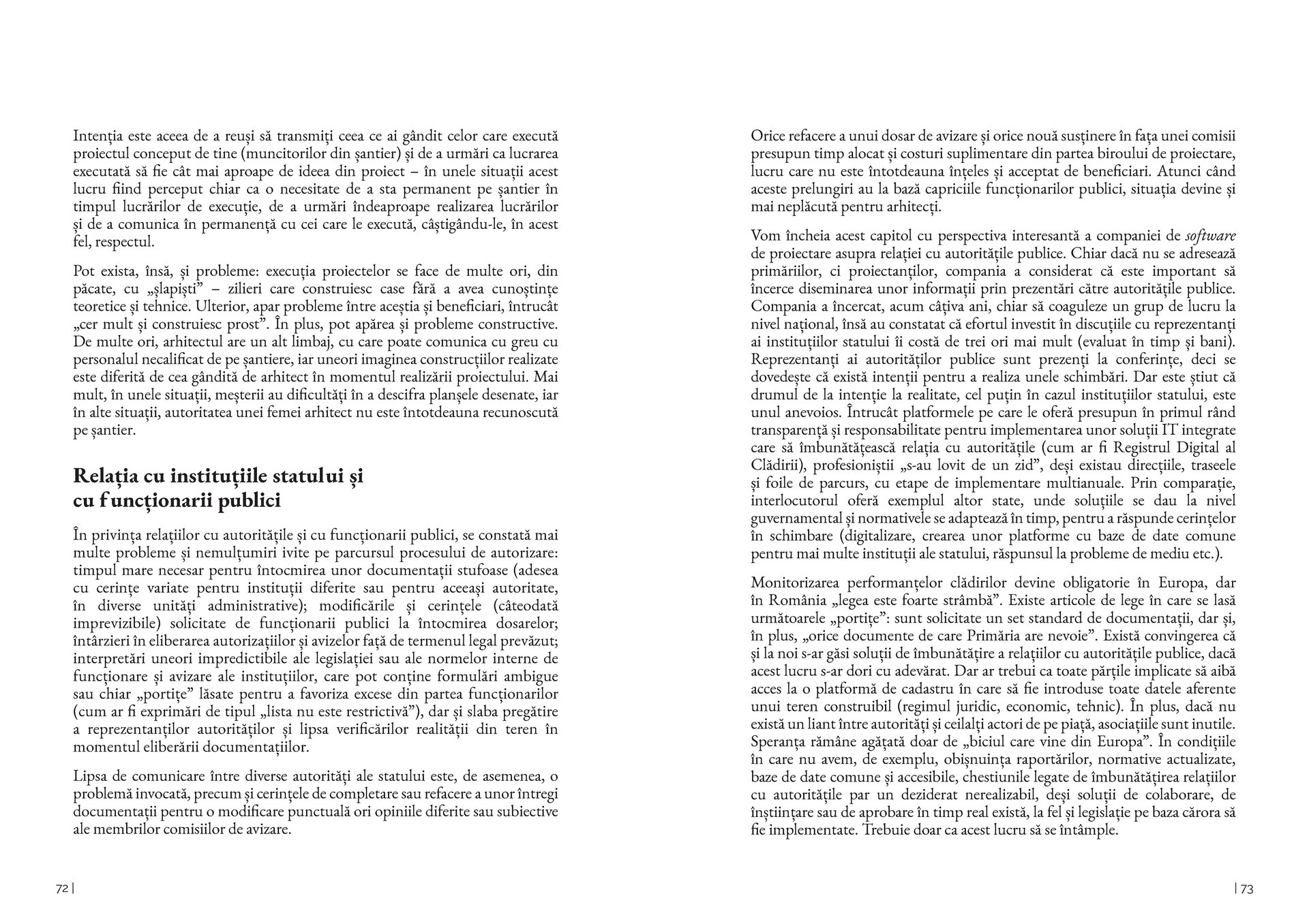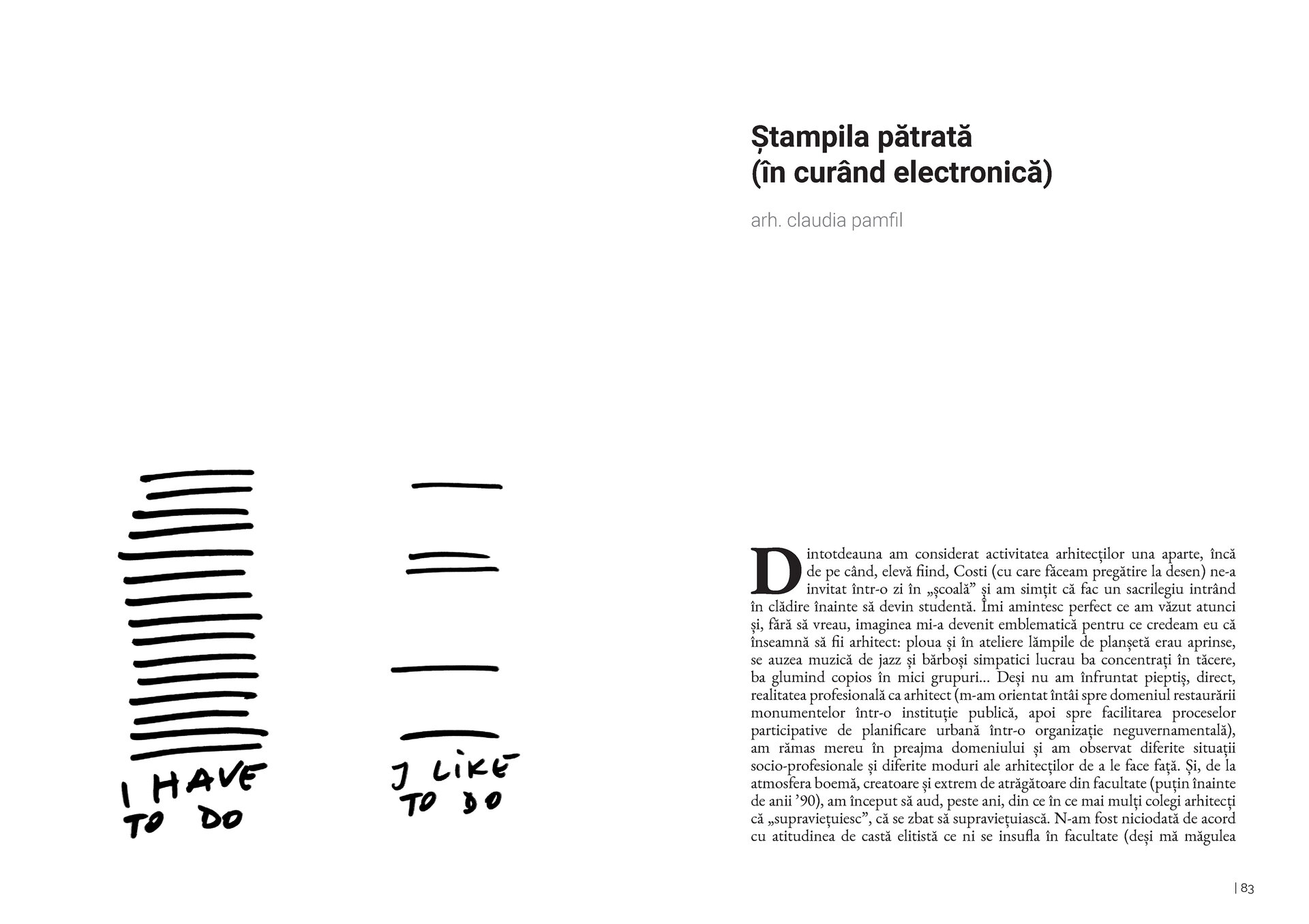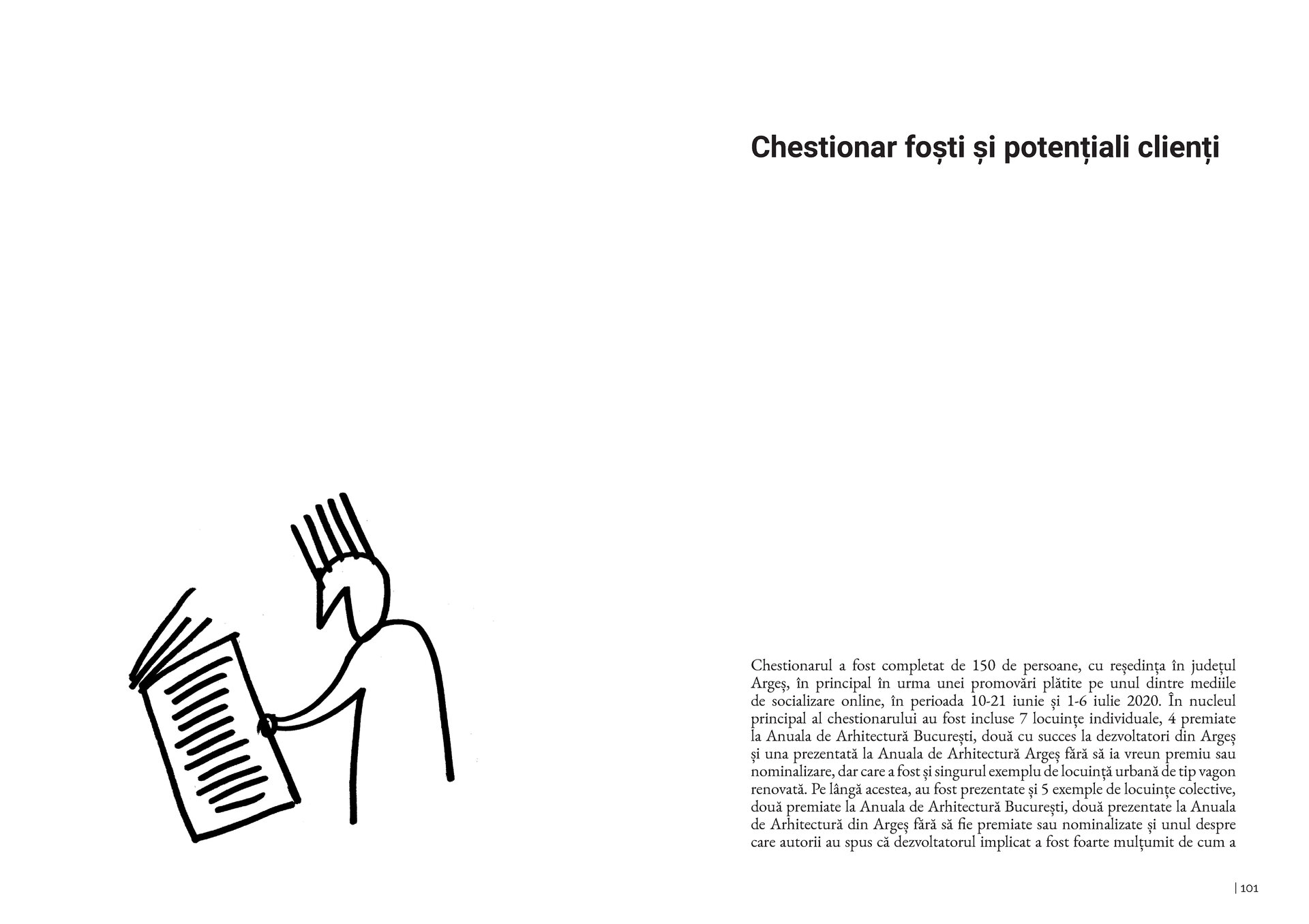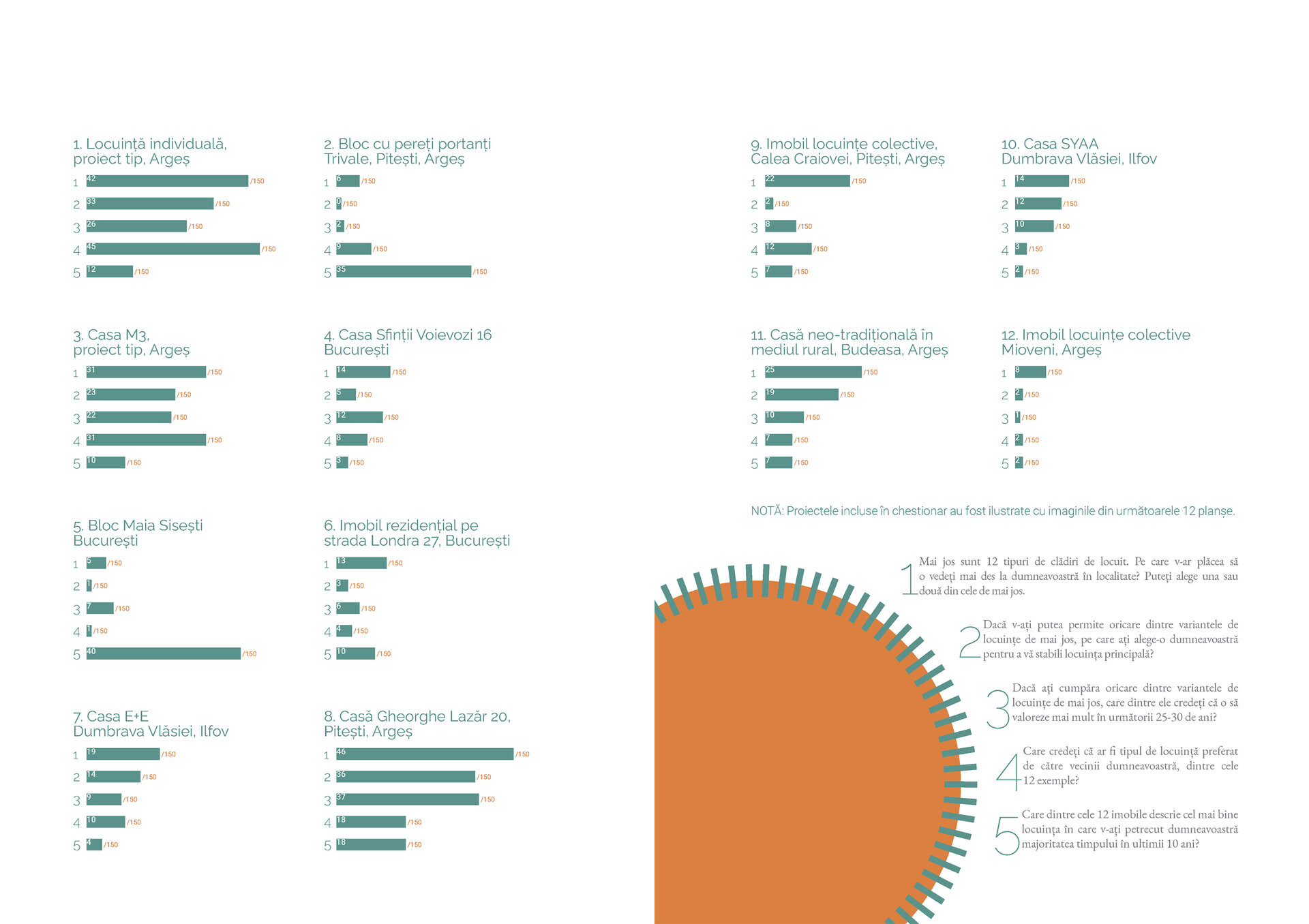
The Adaptable Architect
Authors’ Comment
Perhaps one of the most difficult challenges facing any person is that of honesty, to themselves and the others, even if concerning only professional issues. The cultural program, “The Adaptable Architect”, initially called “The Vulnerable Architect”, financed through The Architectural Stamp Duty, started from the premise that this difficulty doesn’t seem to be recognized, nor honesty was it looked for by any means allocated through the Romanian professional organizations dedicated to architects.
The professional organizations of architects are rightfully preoccupied with defining, by law, regulations and code of conduct, an ideal professional stance. At the same time, through public events such as professional exhibitions, competitions and conferences, the organized bodies of architects try to propose professional success stories. Unfortunately, except for disciplinary committees, it is difficult to notice what resources are allocated to those architects who are not selected for professional events but daily must face extremely complicated negotiations.
The present collection of articles is based on a series of anonymous interviews with architects from the Argeș branch, focused on six issues: relationships with customers, with civil servants, with competing architects, with differently specialized collaborators, with their own future and with economic precautions. The collected opinions from architects are corroborated with opinions of differently specialized professionals and of civil servants. In addition, by means of an online survey, there were collected opinions of former and potential clients regarding the perceived role of architects in realizing their homes.
After conducting the interviews, Livia Ivanovici describes a state of exhaust and disappointment of architects, adding though a touch of optimism when discussing an emerging entrepreneurial culture. Laura Popa-Florea brings to the fore the voices of those who accepted to participate in interviews and explores that fine line between a sustainable professional practice and the desire for quality in architecture. The team of Emilia Țugui and Oana Mihăescu approach the public dimension of the architectural profession. The collected opinions invite questions on how individual decisions of architects regarding their presence within the public sphere influences the entire professional community. Claudia Pamfil notices a low level of adaptability – which she describes as navigating the inevitable systemic crises without losing the desire to explore and discover. By extrapolating the conclusions of the author, it seems that architects can adapt to changes demanded by their everyday environment, but, at least during the last few decades, not to those higher order social changes.
From the online survey conducted with former and potential clients from the county of Argeș, it appears that both the architect as a professional figure and the type of competences formed through academic education, are surprisingly absent from the received answers. As such, a question arises, whether we might not witness a failure in creating a built cultural environment which could eloquently propose to the public sphere the kind of professional values promoted by architects.
- Churches built by the freemen
- A travel on the Metropolitan Hilland in the Surroundings
- foam, wire, speakers
- yet | încă
- The Void as a Conceptual Instrumentfor the Investigation of Post-industrialCity's Organicity
- Policentrality and Metropolitan Coherence
- “from behind the cinema to the fresco hall”
- Repressive mechanisms at the romanian school of architecture 1944-1958
- The Adaptable Architect
